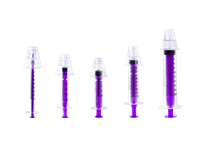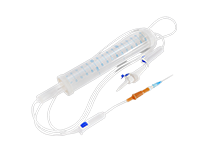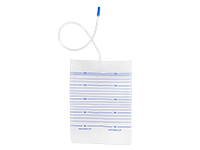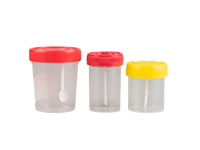News Categories
Disposable syringes

Disposable syringes
Safety Syringes/ Auto-Disable Syringes
Safety Syringes/ Auto-Disable Syringes
Oral/Enteral Syringes

Oral/Enteral Syringes
Infusion Sets

Infusion Sets
Urine Bags

Urine Bags
Urine Cups

Urine Cups
The oral medication syringe with cap is very similar to other syringes and can easily be used incorrectly resulting in medical errors, so what can be done to avoid them? Here are some measures to reduce the incidence of errors with the oral medication syringe with cap.

1. Check the connectivity of medical equipment. All ports on nasogastric tubes, enteral and parenteral tubes, and catheters should be checked to determine which type of connector they are suitable for.
To reduce the risk of misrouting errors, ports on parenteral tubes should be fully incompatible with the oral medication syringe with cap, while enteral devices should only be suitable for the oral medication syringe with cap and catheter tip connectors.
2. Provide oral medication syringe with cap in all clinical areas. all areas should be equipped with an appropriately sized 1 mL, 5 mL, or 10 mL oral medication syringe with cap. if possible, the appearance of the oral medication syringe with cap If possible, the appearance of the oral medication syringe with cap should be different from that of the needle. The judicious use of color and design can help staff to distinguish oral and enteral syringes from parenteral syringes. Staff should be warned to avoid associating specific colors with the oral or enteral route, as there is no standard between products from different manufacturers.
Although some facilities use an amber oral medication syringe with cap to distinguish it from a syringe, the amber color hides the color of the fluid and makes the volume more difficult to see. Some facilities use amber only when the product is light-sensitive.
3. If possible, pharmacies should dispense oral medication in liquid form in the oral medication syringe with cap. Pharmacies should be required to dispense all oral liquid medications into patient-specific or unit-of-use oral medication syringes with cap or commercially available dosing cups. When appropriate, batch supplies can be prepared to store automatic dispensing cabinets.
4. Inform the pharmacy if liquid medication is required. If the patient is unable to swallow solid medication, the nurse or doctor should inform the pharmacy so that liquid doses can be provided in an ORAL MEDICATION syringe with cap or dosing cup.
5. Reduce risk tolerance. Stress the potential dangers of inadvertent injection of intravenous oral or enteral fluids prepared with parenteral syringes. Point out to staff that external (and internal) errors have occurred even if the error did not affect the patient. Communicate the idea that errors can occur. and identify the risk of wrong route errors in policies and procedures regarding oral and enteral fluids and enteral feeds.
6. Require staff to use only the oral medication syringe with cap when preparing and administering oral or enteral fluids. all small volume oral and enteral solutions should be prepared and administered with the oral medication syringe with cap to avoid placing any non-gastrointestinal products into parenteral syringes. Topical products should not be placed in the oral medication syringe with cap. The warning on the liquid medication administration record (MAR) should state "use oral medication syringe with cap only."
7. Labelling of aids. The oral medication syringe with cap dispensed from the pharmacy should be labeled "for oral use only" on the tip or plunger so that the label must be removed before the solution is supplied. Do not override the manufacturer's label warning.
8. Mark all access lines. Place labels on all remote ports and tubes of the access line. Labels should indicate the purpose of the port or line.
9. Raise staff awareness. All healthcare professionals involved in the prescribing, dispensing, and administration of medication should be familiar with the design and use of the oral medication syringe with cap and its safety features. The importance of using the oral medication syringe with cap should always be stressed. A simple poster "Use only the oral medication syringe with cap to inject fluids" in each medication room will help with this step.
10. Develop a training program. All induction programs for staff administering oral fluids and using enteral feeding systems should include using the oral medication syringe with cap correctly. senior staff should supervise new staff to ensure that they consistently use the oral medication syringe with cap.
Quick Response within 24 hours!
Tel: (+)86-519-88168398
WhatsApp: +86-13961432323
Email: sale01@lelun.com
HengShanQiao Town, out of East Gate, Changzhou ,Jiangsu, China
Changzhou Medical Appliances General Factory Co., Ltd. was built in 1988, it is a modern factory specialized in producing the disposable medical appliances in China. The factory is only 1km to Hengshan entrance of Huning high-speed road and is about 20 miles to Changzhou airport. So the traffic is convenience.
The area of the factory is 40000㎡, the area of purifying workshop is 7000m, and fixed assets are about 5,000,000USD. Our main products are Disposable infusion sets, Disposable blood transfusion sets, Disposable Sterile syringe sets, latex glove, disposable infusion set, simple oxygen mask, nebulizer mask, urine cup, hernia mesh, urine bag etc. Now we can manufacture more than 200,000,000 sets per year.